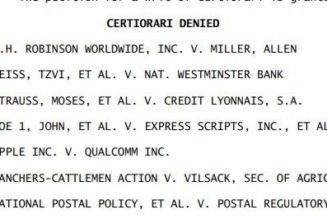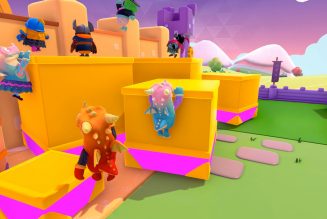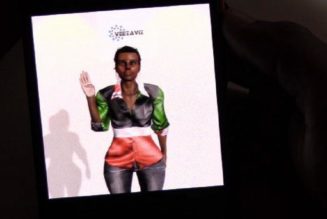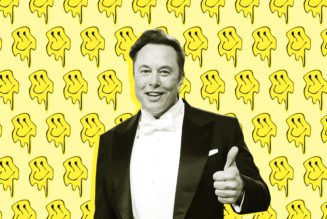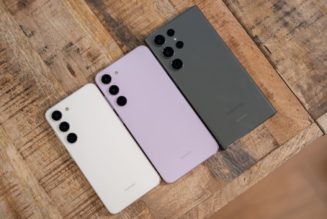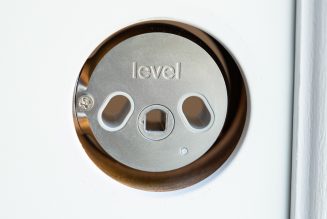The first time Tom Williamson and Rob Mehew tried to make an NFT project, they landed on unicorns. Overweight unicorns, actually. Plump and slumped over, unable to stand up on their own four hooves, and illustrated in a chunky 16-bit art style. They called the project Faticorns, generated 10,000 of the creatures, and put them all on sale.
Only one sold.
So they scrapped the project, and teamed up with Evan Luza and artist Colin Egan on something different: Cool Cats, a generative NFT project that planned to make 9,999 cartoon cats. They were cute, blue, illustrated, and decked out in accessories like beanies, bandanas, and flannels. This time when they went on sale, all 9,999 sold out in eight hours, netting them around $400,000 in Ether.
What was different about the cats? They were “cute and cool,” said Luza, who goes by ELU online. And the experience of buying the cats felt like an event. “The way we packaged the offering, it felt like opening a pack of Pokémon cards,” Luza said.
:no_upscale()/cdn.vox-cdn.com/uploads/chorus_asset/file/22802474/unnamed.png)
Projects like Cool Cats have become all the rage in the NFT space in the past few months, driven by the success of ludicrously valuable collections like CryptoPunks, some of which have sold for millions of dollars each. These projects typically follow the model CryptoPunks set back in 2017: they include 10,000 pieces, all of which are “programmatically generated” — randomized, basically, from a set of premade components like smirks, hats, mustaches, and T-shirts — and formatted as headshots, perfect for a profile picture on Twitter or Discord.
You can think of these NFT series a bit like big games of Pokémon, except each creature can only be captured once. That means if you want more of them, or never caught one in the first place, you have to buy one from someone who started playing early. Naturally, fan favorites like Pikachu and Charizard are going to be valued more than some seventh-generation throwaway like Cutiefly. That’s why in an NFT series like Cool Cats, you’ll see some cats going for 3ETH (around $10,000), others going for 15ETH (around $49,000), and all of them well above the initial “capture” price of .02ETH (about $42 at the time), for people who got in on day one.
Dozens of these projects have popped up in recent months, typically themed around a single creature. There are penguins, aliens, and robots; lions, tigers, and bears; plus a whole lot of cats — Gutter Cats, MoonCats, Mad Cats, Punk Cats, Stoner Cats, and BlazedCats (yes, there are two weed-themed cat NFT series).
The biggest, at the moment, is apes. Bored Ape Yacht Club, which launched in April, includes 10,000 apes with a punk vibe, dressed in trucker hats, stud earrings, and mischievous grins. At launch, apes were sold for the equivalent of $186 a pop. Now, the cheapest ape costs more than $80,000, and several have sold for more than $300,000 each at today’s exchange rate.
:no_upscale()/cdn.vox-cdn.com/uploads/chorus_asset/file/22802500/bayc.png)
“We were thinking, we have this club, this dive bar, what kind of people do we imagine would go into this bar? Who do we want? What kind of club would we ourselves want to be a part of?” one of the Bored Ape co-founders, who goes by the pseudonym Gargamel, tells The Verge. “After a long night of brainstorming, it came to [Gordon, another co-founder] in a dream: Bored Ape Yacht Club.”
It’s easy to get the impression that these projects, all modeled after and inspired by the immense success of CryptoPunks, are cash grabs for project owners and NFT holders alike, snatching up cookie-cutter JPGs with the hope of reselling them a couple of months or years later for a surprise windfall. Pop into the Discord servers for any of these projects, and you’re likely to see a conversation about “floor prices” — the cheapest an NFT from the series is selling for — before too long.
But nearly everyone who spoke with The Verge about their involvement in launching or buying these NFT series said the monetary component was just one part of the story, and often not even their primary interest. “When I had an ape as my profile picture, I could DM any other ape and connect with them,” Spencer Gordon-Sand, a current Cool Cats owner (and former ape owner) who works in venture capital, tells The Verge. “This is a really easy in to a community of people.”
The projects’ real selling point is supposed to be some combination of great art and access to a great community. Bored Ape Yacht Club, or BAYC for short, was really the first to figure this out. The BAYC founders tried to make the process of getting an ape as easy as possible for initial buyers, and they styled their series as offering membership to a literal “club.” Their website is built around illustrations of a divey bar, and it grants access to a members-only board where you can leave digital graffiti, so long as you own an ape.
Several project founders said that focusing on money first and leaving community behind was a recipe for disaster. “That’s a loser’s game,” Gargamel says. “That’s how you create an unsustainable pump” — a temporary price surge that eventually crashes — “and we’re trying to build this long-term.”
:no_upscale()/cdn.vox-cdn.com/uploads/chorus_asset/file/22802525/dogepound.png)
So far, building a community has mostly meant launching a Discord, doing free giveaways, and announcing plans for new features. BAYC plans to launch “mutant apes,” while Cool Cats is working on models to bring its cats into the metaverse. The giveaways mean that NFT owners get more NFTs, giving them more to sell, and driving up the floor price as outsiders see the added value that comes with owning a cat, ape, or whatever else.
BAYC, in particular, is interested in expanding what it means to be a member of their club. “Your ape is your Amex black card,” Gargamel said. It gets you NFT cred online, but maybe it can also get you into exclusive presales and events, like a recent meetup in LA.
The potentially lucrative financial return is very much still an incentive for buyers and founders, though, and other projects are clearer about that. Bones & Bananas, a series of NFT bananas, is meant to bolster the price of Bored Ape NFTs. The project, run by Bored Ape fans (and ape owners), uses some of the money raised from its own 10,000-edition series to buy up apes at floor prices, increasing demand.
And one leader of The Doge Pound was straightforward about viewing buyers as people trusting him with their money. “I view everyone as an investor … and I think it’s important that you do the best you can to get a good return on everyone’s money,” says the co-founder, who goes by the pseudonym John Lemon.
Plus, successful projects essentially become booming small businesses for their founders overnight. After their initial sale, project leaders may have hundreds of thousands of dollars in capital (Lemon said he netted $1.2 million). They’ll typically then get a small cut — usually around 2.5 percent — every time one of their NFTs is resold. So the next time a rare ape goes for 100ETH, the project leaders would collect 2.5ETH from the sale, or more than $8,000 at today’s exchange rate. That’s a huge incentive to continue maintaining a community and stoking further interest.
“It’s pretty insane,” Gordon says. “That was actually the joke: we’re now running a multimillion-dollar hedge fund with like 13,000 really active users in a Discord.”
Their end goal isn’t necessarily just the cash they make by skimming a little off the top, though. The Bored Ape creators say they envision turning BAYC into more of a streetwear brand — they’ve already offered limited-release hats, T-shirts, and hoodies, which have subsequently been flipped for outlandish prices on eBay — and that NFTs might just be their first product. And the Cool Cats team envisions their brand turning into the next Hello Kitty.
For Luza, the Cool Cats co-founder, the dream looks something like this: “You walk into Target and you see Cool Cats plushies on the shelves, and buy a Cool Cats game on the Switch that comes with a Cool Cats NFT, and when you’re at the register at the front you cop a Cool Cats Snickers bar on the way out.”
So far, the generative NFT model has worked. Many of these projects have built both community and monetary value in the months since they launched. But no one has figured out what comes next. It took years before CryptoPunks skyrocketed in value. And while the free goodies and second-generation characters can give these projects a boost for now, creating new generations of their NFTs risks diluting the exclusivity that comes with joining these oddball clubs.
“Too many new NFT projects using what is becoming a tired playbook,” Kevin Rose, a venture capital investor, wrote on Twitter the morning he switched his avatar to a Cool Cat. “I’m going to avoid buying new projects that have 10,000 unique [insert animal], where they swap out 3D glasses, hats, hair, necklaces, and skins.”
But as long as the cat — or robot, or alien, or ape — is cute enough, people might still be willing to spend a fortune to get one.


